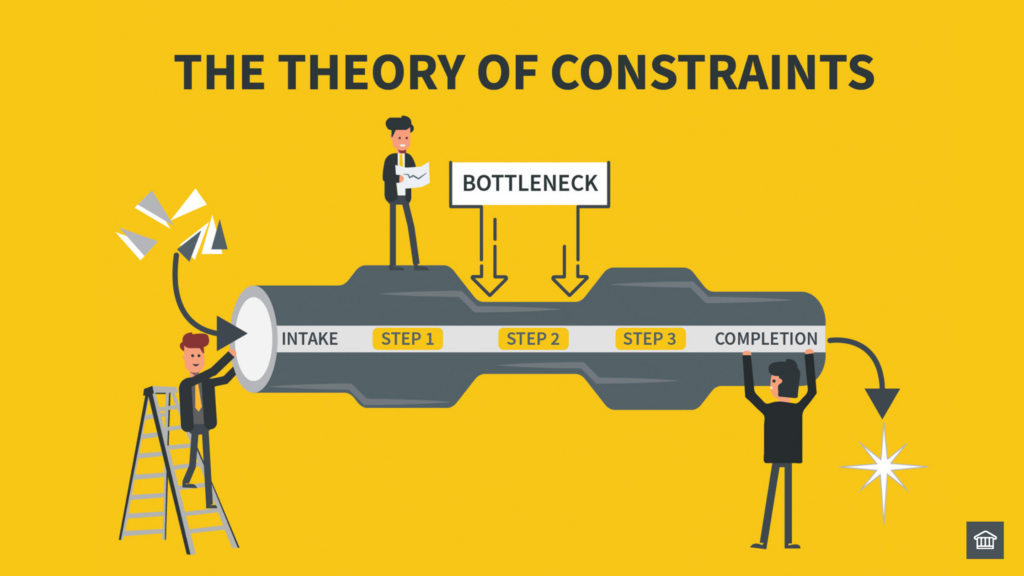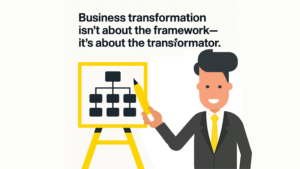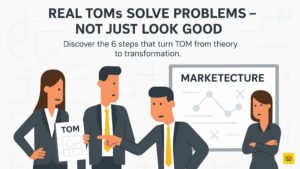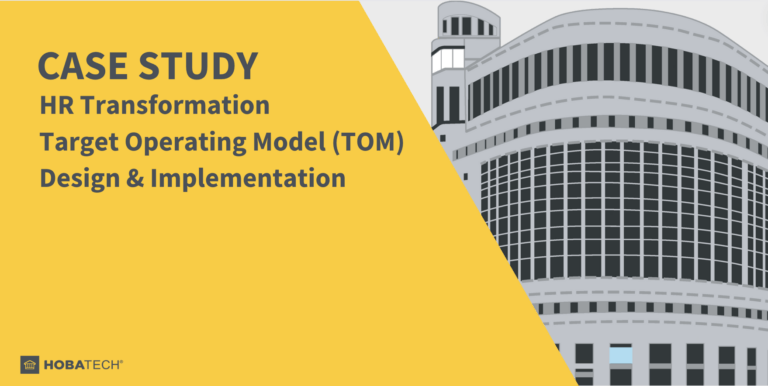Introduction to HOBA Tech's Blog Post
Welcome to HOBA Tech’s insightful blog post titled “Theory of Constraints: Focus Areas for Business Transformation Success”.
This post delves into the Theory of Constraints and its pivotal role in facilitating successful business transformation.
It underscores the importance of addressing constraints and provides valuable insights into the key areas to focus on for achieving transformation success.
Key Points
The blog post discusses the five common pitfalls in business transformation and highlights the significance of the Theory of Constraints in circumventing these failures. It emphasises the importance of positively addressing the most constrained resource in an organisation, which can lead to a significant reduction in transformation failure rates.
The post also advocates for the use of tried, trusted, and proven methods for successful transformations, introducing the Theory of Constraints as a method that could potentially aid in achieving successful business transformation.
Furthermore, it introduces HOBA Tech’s agile business transformation framework, HOBA (House of Business Architecture), as a solution that has successfully guided numerous companies through their transformation journey.
Heres what we’ll cover (click the links to skip to the section below):
NB – Click to expand images 📸
In today’s every changing business world, companies and consultancies look to tried, trusted and proven methods and frameworks to transform their organisation, with varying degrees of success.
The good news with tried, trusted and proven methods is they have stood the test of time, are robust and work. The bad news with tried, trusted and proven methods, is two parts – frameworks these days have been repurposed with another, different use (not the original one they were intended for), and more importantly – its not (mostly) the problem with the framework, its the User ie the practitioner and/or consultant – the person leading the transformation skill (or lack of it) to u se it two ways – proportionately, and appropriately for the situation.
Effective consulting requires tailoring solutions to the unique needs and characteristics of the organisation.
Unfortunately, many new or junior consultants fall into the trap of applying solutions in a cookie-cutter manner, without considering the context of the organisation they are working with.
Consultants need to develop their situational awareness and contextual understanding to develop tailored solutions that address the root causes of the problem. By doing so, they can provide value to the organisation and avoid ineffective solutions that don’t address their specific challenges.
If you are about to start your transformation, lead it or participate in it, and you want to make your transformation successful, most importantly – with less stress, less risk, less cost and less time, and follow a tried, trusted and proven method, then this post is for you.
In this post, we will discuss a tried, trusted and proven method (the Theory of Constraints) that could help you with your transformation, whats good about it, what to look out for, and before it goes all wrong what do instead.

6-Steps to Business Transformation Success
WHAT THE TOP 30% OF ORGANISATIONS KNOW THAT YOU DON’T 👉

👏 "Effective consulting requires tailoring solutions to the unique needs and characteristics of the organisation. Unfortunately, many new or junior consultants fall into the trap of applying solutions in a cookie-cutter manner, without considering the context of the organisation they are working with" 🚀💡 #ConsultingMistakes #StrategicTransformation #BusinessTransformation
Heath Gascoigne Tweet
The Theory of Constraints
The Theory of Constraints (TOC) is a management philosophy developed by Dr. Eliyahu M. Goldratt. It is based on the idea that every system has at least one constraint that limits its performance. The goal of TOC is to identify and eliminate constraints in order to improve the overall performance of the system.
What is the Theory of Constraints?
The theory of constraints consists of three main principles:
- Every system has a constraint that limits its performance
- The performance of the system can be improved by identifying and addressing the constraint
- Improvements made to the system should be focused on the constraint
According to TOC, the performance of a system is limited by its weakest link, or constraint. By identifying and addressing the constraint, the overall performance of the system can be improved. TOC focuses on improving the flow of resources through the system, rather than optimizing individual parts of the system.
How does it help your transformation?
The theory of constraints can be a valuable tool in business transformation efforts. By identifying and addressing constraints in the system, businesses can improve the overall performance of their operations. This can lead to increased efficiency, productivity, and profitability.
When applying the theory of constraints, it is important to focus on the constraint and its impact on the system as a whole. By addressing the constraint, improvements can be made to the entire system, rather than just individual parts. TOC can be used in a variety of industries and settings, including manufacturing, healthcare, and service industries.
What mistakes people have with this framework?
The mistakes people make with TOC is two parts, eluded to in the intro of this post – one of the framework itself, and the other – is the practitioner.
First the problem with the framework
One common mistake people make when applying the theory of constraints is to focus on optimising individual parts of the system, rather than addressing the constraint. Another mistake is to assume that the constraint is fixed and cannot be changed. This can lead to a lack of creativity in identifying solutions to address the constraint.
It is also important to note that TOC is not a one-size-fits-all solution. It should be used in conjunction with professional judgement and customized to fit the specific needs of the organization.

👏 "One common mistake people make when applying the theory of constraints is to focus on optimising individual parts of the system, rather than addressing the constraint" 🚀💡#TheoryOfConstraint #StrategicTransformation"
Heath Gascoigne Tweet
Second problem - the Practitioner
As eluded too in the introduction of this article – the second problem with the framework, is actually not the framework itself, its the person(s) using or applying it. The Practitioner – whether that ‘practitioner’ is an internal or external consultant, full time employee or paid consultant.
The problem in general is that consultants have got lazy. They dont think. They blindly apply that (or any) framework, including TOC, without considering the unique circumstances of the organization. Like rote learning, painting by numbers.
The problem with that is a framework by definition is a set of guidelines (usually representation best practice), rules and principles, that… are applied or rather, should be applied in two ways:
- Appropriately, and
- Proportionately.
That is – appropriately, and proportionately for the situation at hand. The ultimate goal for any practitioner, is what was designed and implemented namely – the organisations Target Operating Model (TOM) is fit for purpose, delivers the changes that enable the Organisation to realise its planned business benefits, and allows the Organisation to achieve its Vision, the organisations ultimate goal.
The key being – the Business, after the Consultants leave the TOM with, are:
- able to understand and use it it, and
- It lives and breathes long after the Consultant (or Consultancies) leaves the organisation.
Looking for the Best Training to deliver your Business Transformation? Search no more!
- 30-Day Money-Back Guarantee
- Risk FREE

👏 "In todays every changing business world, companies and consultancies look to tried, trusted and proven methods and frameworks to transform their organisation, with varying degrees of success. The good news with tried, trusted and proven methods is they have stood the test of time, are robust and wo If you are about to start your transformation, lead it or participate in it, and you want to make your transformation successful, most importantly with less stress, less risk, less cost and less time, and follow a tried, trusted and proven method, then this post is for you." 🔄 #BusinessTransformation #ProvenMethods
Heath Gascoigne Tweet
What happens in practice however – its doesnt. Consultants take the text book and whack it over the Clients head and claim “here, its in the book”, or worse – when sensing the Client is completely bewildered by the jargon and nonsensical language being thrown at them, told to “go to Google, and Google it” if they dont understand it.
If you are ever told to go to Google to look up what the consultant has just pitched to you means one or two things – 1) they themselves dont understand it, that they are unable to make sense of the situation, and break it down into the level of language and detail that audience understands.
The second point 2) is – you should run for the hills. If you as the Client can not understand now, while the Consultant is still in the room (or building) with you, how do you think you are going to live with that they are proposing to deliver after they have left?
The short answer is – you wont. The long answer is – if you dont understand it now while the Consultant is there, you are not going to understand nor use it, or use it well or for long after they have left.
What will happen in that second scenario is when you contact the Consultant after they have left and complain ‘what they delivered is broken’, they will claim like every unscrupulous consultant claims (which we by the way get called to come in and fix) “well it was working when we left and gave it to you”.
It was working while they were there, because they were there. However, the Business is not ‘scot free’ and not responsibility free – the Client/Business is also guilty. The Client will nod and agree to what the Consultant says in the room (when they clearly dont understand), when they should actually challenge them and say “hey, sounds interesting, but how do we actually use it – like actually?”.
If you want to listen to our podcast with Jonathan Coneby where we cover The Theory of Constraints, and how to (and not to) apply that framework, including the overcoming the problem with Consultants mentioned above, check it out here 👉

Watch the full podcast with Jonathan Coneby and get a masterclass in The Theory of Constraints here.
Conclusion
In conclusion, the blog post “Theory of Constraints: Focus Areas for Business Transformation Success” by Hoba Tech provides a comprehensive guide on the application of the Theory of Constraints in achieving successful business transformation. It emphasizes the importance of focusing on specific areas and leveraging key principles and strategies for successful transformation.
The theory of constraints is a powerful tool that can be used to improve the performance of a system. By identifying and addressing the constraint, businesses can improve their operations and achieve their goals. However, it is important to use TOC in conjunction with professional judgement and avoid blindly applying any framework without considering the unique circumstances of the organization.
The post delves into the Theory of Constraints and its relevance to business transformation, outlining the focus areas essential for achieving success. It highlights the fundamental differences between execution and innovation and their critical roles in driving successful business transformation.
The post also discusses the impact of technology on the most constrained resource within an organisation and emphasises the role of empathy as a toolset for successful business transformation.
Lastly, it underscores the significance of leveraging tried, trusted, and proven methods, such as the Theory of Constraints, to ensure successful business transformation with reduced stress, risk, cost, and time.
Learn More & Contact Us
To learn more about Hoba Tech and how we can assist you in your business transformation journey, please visit our website or contact us directly. We look forward to helping you navigate your transformation successfully.
If you liked what you read, learn more about Business Transformation and how to bring it to reality with less stress, less effort, less time, less cost, and higher profit. Learn about our award-winning agile Business Transformation framework, already used by thousands across the world to transform their business, including the UK Government, FTSE 100 Companies and start-ups, check it out here.
If you want to read why others are calling The Business Transformation Playbook the “Business Transformation Bible,” read the reviews on Amazon here.
Hope you find that useful. If you did, let me know in the comments below what you like and would like to see next, and share this with anyone you think would benefit from it!
Thank you for reading this!
Sincerely,

Heath Gascoigne
P.S. If you want to join our Business Transformator community of 2,000+ like-minded Business Transformators, join the community on the Business Transformator Facebook Group here.
P.P.S. If you want to learn more about business transformation, check out The Business Transformation Playbook here.













